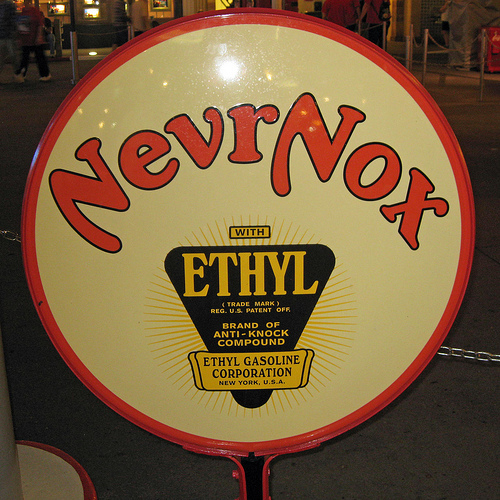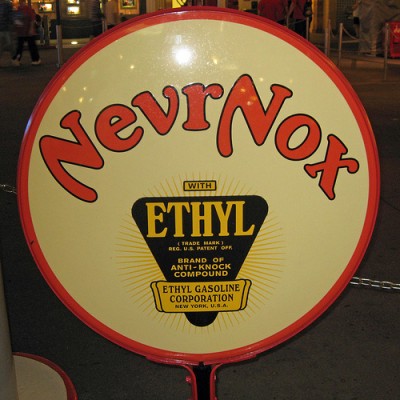[column width=”1/1″ last=”true” title=” title_type=”single” animation=”none” implicit=”true”]
On this day in automotive history, an adolescent engineer at General Motors discovers a compound called tetraethyl lead (TEL).
This engineer figured out that when TEL is added to gasoline, it eliminates the irksome noises (known as knock or pinging) that internal-combustion engines make when they run.
The General Motors engineer was Thomas Midgeley Jr. and little did he know, that for more than five decades oil companies would saturate the gasoline it sold with a deadly poison.
In February 1923, Midgeley missed the first tankful of leaded gasoline being pumped in a Dayton filling station because he was bed-stricken from severe lead poisoning.
Midgeley did recover, but in April of 1924 two of his colleagues weren’t as lucky. Then, in October of that same year, five workers at a Standard Oil lead plant died too, after one reporter called it “wrenching fits of violent insanity.”
During a press conference, he doused his hands in leaded gasoline and sniffed it from a flask for 60 seconds to prove the fuel was safe.
An estimated 40 workers from the plant suffered harsh neurological symptoms including seizures and hallucinations.
It wasn’t until the 1970s when the Environmental Protection Agency forced carmakers in the United States out of the lead-compatible engines.
Midgeley died on November 2, 1944, and not because of lead poisoning. He was suffocated after becoming entangled in the rope and pulley invention he had created to help support his ailing body from polio.
[/column]



